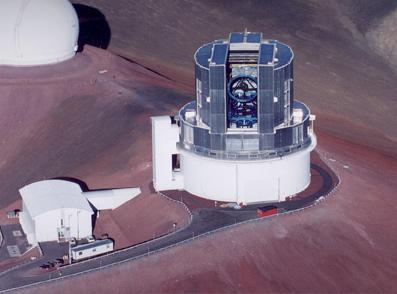A research group led by Koji Kawabata of Hiroshima University in Japan, Keiichi Maeda, Ken’ichi Nomoto, and Masaomi Tanaka of Inner Mongolia Polytechnic University (IPMU), and their collaborators reported observations of a peculiar type Ib supernova, SN 2005cz, and they concluded that this is a supernova whose progenitor mass at its birth was about 10 times that of the Sun. Such a star represents a boundary between stars that end their lives with a gigantic supernova explosion and those without explosions. Supernovae from stars that were originally about 10 solar mass should occupy a large fraction of supernova explosions taking place in the universe; however, a supernova whose progenitor mass lies just above the boundary has not been identified.
This is a reason why astronomers have been searching for an explosion in this mass range. This study finally provides a solid confirmation on the stellar evolution theory. Having identified properties of the resulting supernova explosion, this study also serves as an important step forward toward understanding roles of supernovae in the evolution of the universe.
The standard theory of stellar evolution tells us that the life of a star is determined when it is born — the mass at birth is a main function. Stars whose initial masses are above 8 to 10 solar masses experience a violent death at the end of their lives — their inner core should suffer from a gravitational collapse, which then leads to the gigantic explosion known as a supernova explosion. Scientists believe that this phenomenon is the origin of apparently new stars — supernovae — which suddenly appear on the night sky. (Note that there is another channel leading to a supernova explosion, a type Ia supernova, which is a thermonuclear explosion of a white dwarf.) The number of stars in the universe decreases as a function of their mass — there are greater “less massive” stars than “more massive” stars. Therefore, scientists have believed that stars of about 10 solar masses at birth are the largest population among stars that end their lives as supernovae.
However, a supernova from this lower boundary in the progenitor mass had not been identified. It seemed that all core-collapse supernovae for which the research group estimated the progenitor masses originated from stars whose initial masses were at least 12 solar masses, sometimes above 40 solar masses. The researchers wondered why they did not identify the explosion from the lower-limit-mass stars. Is there anything wrong in the theory of stellar evolution? If this is the case, it is a disaster for astronomy. In many fields of astronomy, it has been assumed that these stars are the predominant population of supernovae.
The research group observed a peculiar type Ib supernova, SN 2005cz, using several telescopes, including the 8.2-meter Subaru Telescope. They found various puzzling properties of this supernova: (1) it showed up in an elliptical galaxy that usually lacks massive stars to become type Ib supernovae; (2) it was faint, reaching only 20 percent of typical luminosity of other type Ib supernovae; and (3) it faded very quickly. On top of these properties, a late-time spectrum taken by the Subaru Telescope about 200 days after the explosion was most striking. An emission line from oxygen, which is the strongest in type Ib supernovae, is nearly missing while there is a very strong emission line from calcium. This property is indeed a unique feature expected from an explosion of a star with about 10 solar masses. The research group concluded that all the peculiarities that SN 2005cz showed could now be understood consistently by this scenario of the explosion of the “least massive star.”










